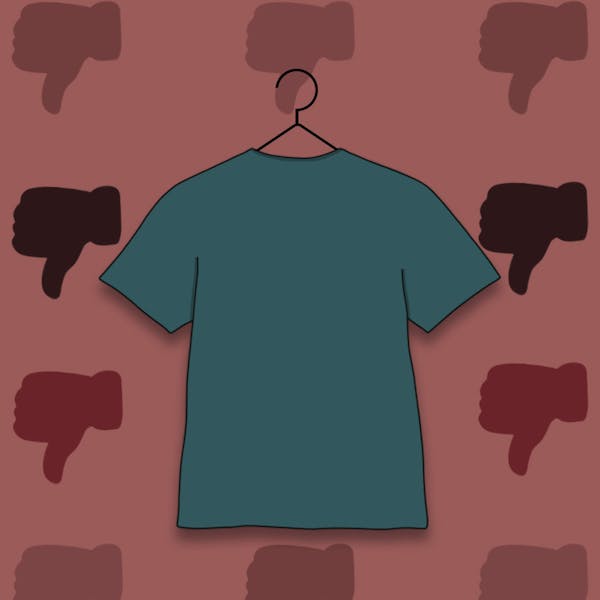Have you looked at your Pinterest, TikTok or Instagram feeds recently and cringed a little bit at an outfit that looks like it was picked out of a lost and found? You’re not alone. Many people agree that fashion has gotten ugly.
There are a couple of reasons for the fall of fashion. One thing to blame is extremely fast trend cycles. In the pre-social media world, a single trend would last for a year or two, and styles would come back on a roughly 20-year cycle. With the rise of apps like TikTok and Pinterest, however, the cycle has sped up considerably.
Trends can now appear and disappear in a matter of months. Styles can return within a few years, meaning countless trends and styles from various years are currently “in.”
Trends like ‘70s-inspired flare jeans, ‘90s-inspired sweaters and 2000s-inspired low-rise can simultaneously trend at once. Fashion is, quite literally, experiencing every decade of trends at once, and the mixing of decades can leave fashion looking disjointed.
Denim maxi skirts, bows and vests are all currently trending in today’s fashion climate. Independently, these are not necessarily crimes of fashion. However, it also is not impossible to see the three of these combined into one outfit. The three trends belong in three different styles, yet are being paired together to create something new.
Rotating fashion trends show that the cycle has sped up significantly, which is leading to greater issues within fashion. Clothes are being produced at twice the rate they were in 2000, and yet many items are only worn seven to ten times before being thrown out. Discarding clothes happens more frequently because clothes are simply not built to last.
The rise of fast fashion has led to an influx of cheaply-made clothing meant to be extremely trendy for a little while, but not for long enough to require it to be made well.
For example, Manchester based clothing company In The Style was able to put out a dupe bodysuit worn by Kylie Jenner in a matter of days. The design captured the vitality of a single trend. The garment was likely made cheaply, to save money rather than investing in a trend that will be off the market in a matter of weeks.
The poor quality of clothing can lend to its ugliness, but ultimately the quick trend cycle’s impact on cheaply made clothing is what makes it ugly. Trends are pushed out at lightning speeds to entice consumers, and the clothes associated with those trends are not built to last.
However, the rise of ugly fashion is not necessarily all doom and gloom. In many ways, fashion is a reflection of the social state of the world. After years of looking towards traditional standards of beauty and fashion, many people are seeking to rebel against it. A distaste for heavily branded, heavily manicured styles has led many towards an intentional pursuit of ugliness.
Internet culture has also shaped this, with many people seeking fashion that will make them happy or make them laugh. For example, slogan t-shirts have had a resurgence in recent years, often as a cheeky response from celebrities to a controversy — such as Sabrina Carpenter’s “Jesus was a Carpenter” shirt. This has trickled down into the lives of ordinary people, and now it is easy to find one in any store or day-to-day life.
as589820@ohio.edu
@alicia_szcz




